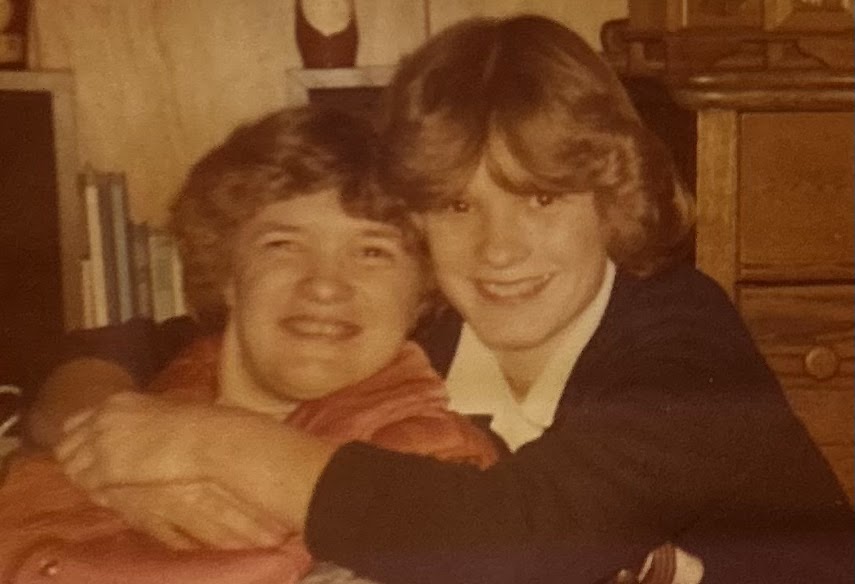The Rights My Mother Fought For—Are They at Risk?
Advocate · Create · Teach — Pam's Den of Creative Fun
When I think about my mother sitting at that basement table, fighting for her child and so many others, I sometimes wonder: do people today understand what she was fighting against? Do they know what life looked like before those protections existed?
Let me take you back.
Before 1975: A Different America
In 1970, U.S. schools educated only one in five children with disabilities. Many states had laws that explicitly excluded certain students—children who were deaf, blind, emotionally disturbed, or had intellectual disabilities were simply turned away.
A 1972 Congressional investigation revealed the scope of the crisis: of eight million children with disabilities, 1.75 million were receiving no education at all, 200,000 were institutionalized, and an additional 2.5 million were receiving substandard education.
Let that sink in. Nearly two million children—denied school entirely.
Families were told that schools "didn't have the facilities" or "didn't have the resources" to serve their children. Some students with disabilities were allowed in schools but received little to no accommodations. Those who did attend were often segregated into special classrooms with untrained teachers and substandard facilities—classrooms that isolated and stigmatized rather than supported.
One Woman's Story—Everyone's Story
I want you to meet someone. Her name was Judith Heumann, and her story captures what millions of families faced.
In the 1950s, when Judith was five years old and ready for kindergarten, her local Brooklyn elementary school refused to admit her. The principal physically blocked her family from entering and called her a "fire hazard" because she used a wheelchair.
A fire hazard. A five-year-old child.
Judith's mother—called "Mighty Mite" by her husband because she would never take "no" for an answer—fought until Judith was eventually allowed to attend a special school and later a public high school.
Years later, after graduating from college in 1969, Judith was denied her teaching license by the New York Board of Education. They feared she couldn't evacuate herself or her students in case of fire. She sued—and became the first teacher who used a wheelchair in New York City.
Judith went on to become one of the most important disability rights activists in history, helping develop and implement the legislation that became IDEA, Section 504, and the Americans with Disabilities Act.
But she shouldn't have had to fight so hard just to go to kindergarten.
What Changed Everything
In 1975, something monumental happened. Congress enacted the Education for All Handicapped Children Act (later renamed IDEA) to support states in protecting the rights of children with disabilities and meeting their individual needs.
This law said something revolutionary: Every child deserves an education.
The impact was profound. The U.S. progressed from excluding nearly 1.8 million children with disabilities from public schools before 1975 to providing special education services to more than 8 million children by the 2022-23 school year.
By 2015, early intervention programs were serving almost 200,000 eligible infants and toddlers, and nearly 6 million young people were receiving special education services tailored to their specific needs.
Children who once would have been institutionalized or denied education entirely were now in neighborhood schools, learning alongside their peers, preparing for jobs and independent lives.
The Table Legacy
This is what my mother and those other parents at that basement table were part of building. They didn't know they were making history. They just knew their children deserved better.
Before IDEA, many states had laws about educating students with disabilities, but the laws were seldom enforced. States tried not to find children with disabilities "because if they found them, they had to do something with them." That's why advocates insisted on "Child Find" provisions—requiring states to actively identify and locate children who need services.
Progress didn't come from government goodwill. It came from parents who refused to accept "no." From advocates who sued school boards and sat in federal buildings for 26 days until their voices were heard. From people like my mom, sitting at the basement table, kitchen tables late into the night, determined to make the world see their children as learners, as capable, as worthy.
Why This History Matters Now
When I hear proposals to "return power to the states" and eliminate federal oversight, I think about those 1.75 million children who had no school to attend before 1975.
When I hear about converting IDEA into "no-strings-attached" block grants, I think about Texas quietly capping special education enrollment until federal oversight caught them.
When I hear that the office responsible for monitoring state compliance has been gutted, I think about Judith Heumann being called a fire hazard.
We've been here before. We know what happens without federal protections.
And we cannot go back.
Coming in Part 3: The Call
In my final post, I'll share what we can do—right now, today—to protect the progress our mothers and fathers fought so hard to win. Because this fight isn't over. It's just beginning again.
And this time, we need to be ready.
With gratitude for those who came before,
Pam
Founder, Pam's Den of Creative Fun
Occupational Therapist · Sibling Advocate · Creative Liaison

